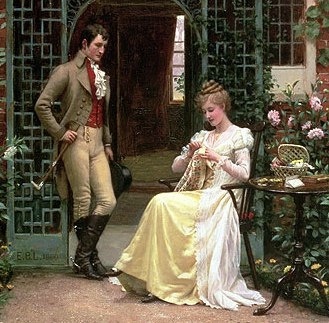Introduction

Victorian Ideals of Dating. Source: http://www.victorian-era.org/victorian-era-courtship-rules-and-marriage.html
Dating and courtship patterns have changed tremendously since the late 1920s. The main focus of this project is the late 1920s until the 1930s, where courtship trends started to shift. In order to understand the dating trends of the 1920s and 1930s, Victorian dating trends (1800-1915) need to be discussed. Victorian dating trends and gender roles became part of American social norms, still exist today.
Gender roles of the Victorian era affected dating and courtship trends. The Victorians took interest in gender roles, and came up with characteristics for the sexes. These gender roles were middle-class societal norms and set the stage for dating and courtship patterns. Though these gender roles were created during the Victorian era, they affected dating and courtship patterns for decades after; the effects of these gender roles can be seen in the letters of J. Frank Young and Henrietta T. Morriss, as the couple navigate courtship from a distance and discuss their everyday lives.
Victorian gender roles for men and women focused on the middle and upper classes, depicting how men and women were supposed to interact when it came to dating and courtship. Men were expected to be assertive, ambitious, and independent. They were to call on women at their homes and pay for dates because they were the breadwinners. Men were also expected to have a varied and active public life and be the head of patriarchal families.
Women on the other hand, were expected to be benign and pious; relegated to be dependent on men and stay in the home. They were not allowed to have an active and varied public life. Women were not expected to work or be self- supporting. They were expected to marry and become wives and mothers. Men and women were held to different expectations for dating and courtship and maintain these elevated roles within the family. Elevating men as assertive and independent would create a gender hierarchy.
Courtship took many forms in American society, from men calling at the homes of women, to moving outside of the home by the 1920s. Other forms of courtship include letters, such as the case with J. Frank Young and Henrietta Morriss, who kept in touch via letters while they were both in school. Their correspondence provides examples of everyday life and how couples flirted through writing. The letters of people allow us to tie their lives into a larger narrative. It allows us to see the beliefs of the people of the time, and see society through their eyes.